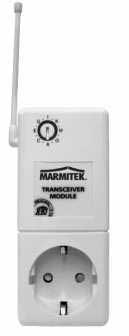 If I
If I
ever get our home automation system configured I’ll use my (partly
broken) old iBook as my Indigo-server (or my MisterHouse-server when I brush up my
Perl-knowledge). It should then run quietly put away somewhere and I
don’t want to take it out every time I want to add another routine to
the program.
Fortunately there is a way to do this by turning
the iBook into a VNC-server, where VNC stands for
Virtual Network Computer. Here is how RealVNC describes
it
VNC (Virtual Network Computing) software makes it
possible to view and fully-interact with one computer from any other
computer or mobile device anywhere on the Internet. VNC software is
cross-platform, allowing remote control between different types of
computer. For ultimate simplicity, there is even a Java viewer, so that
any desktop can be controlled remotely from within a browser without
having to install software.
But can all this be done under
Mac OS X without too much hassle? The first step is to download
OSXvnc and install it on the iBook. Some of the
sourceforge-sites do not seem to have this package, but fortunately some
still do. Installation is no problem and when you fire OSXvnc up
you have to fill in a password which you need later to connect to your
OSXvnc-server (the iBook). Most other options one can leave at their
default values but in the Startup-pane it is useful to click on
the Configure Startup Item button. When all this is done, press
the Start button to launch the VNC-server.
Next step is
to go to the computer you want to use to control the VNC-server (an iMac
in my case). On it one needs to install the Chicken of the VNC software which makes the iMac
into a VNC-client. Fire it up and fill out the Host (the name of
your OSXvnc-server, iBookLieven.local in my case) and the
Password (the one of the OSXvnc-server program), press the
Connect button and the screen of your VNC-server will appear
which you can control with your mouse as if you were actually working on
the thing. Very handy as I managed to break the touch-control on my
iBook when installing a new hard-drive and I need the only USB-port to
connect to the X10-network…
 Tomorrow
Tomorrow I
I